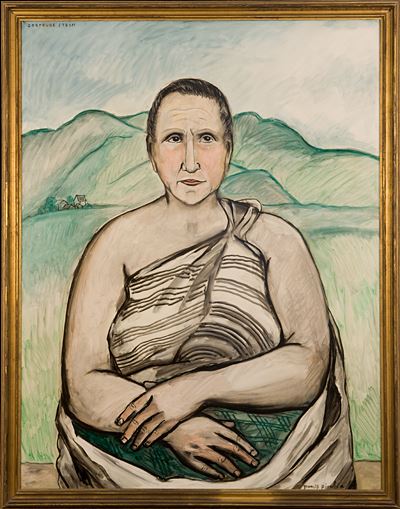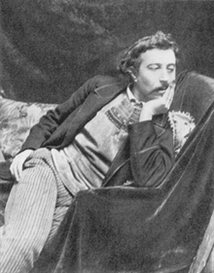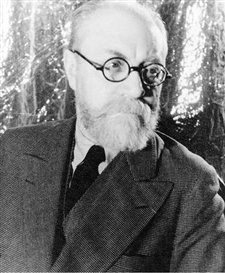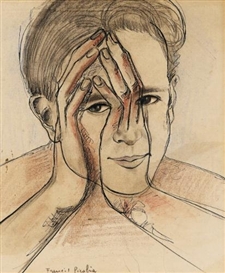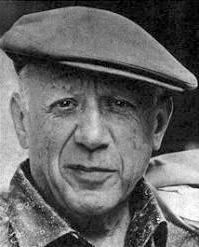Gertrude Stein: A Woman With an Unparalleled Drive for Art
The American writer befriended many of the most important artists and writers of the time when she lived in Paris, accruing a significant art collection and becoming a driving force for their careers
Bianca Spaggiari / 黑料不打烊
05 Jul, 2022

When searching Google for how to start an art collection, a multitude of answers will come up. “The Five Top Tips to Start Collecting Art” or “Millennials and Art Collections: how to start yours” are just a few examples of those, but treading the footsteps of men and women who actually made the history of art, looking at the past can elucidate the basics of collecting, the foundation of which is amassing a fortune and be blessed with foresight.
Gertrude Stein sitting on a sofa in her Paris studio, with a portrait of her by Pablo Picasso, 1930, © Courtesy of My Modern Met
Few collectors throughout history had such an impact on art as Gertrude Stein did on Modern Art. Living and liaising in twentieth century Paris, most of the artists she commissioned and was a patron for are now reckoned as geniuses, masters of Post-Impressionism and pillars of the avant-garde. She furthered the careers of many of them, just by being a curious character, and her impact on the arts cannot be overstated. Born in 1874 in Pittsburgh, Pennsylvania, she first travelled to Europe as a child; her parents wanted the Stein siblings to receive a European education. Years later, Gertrude and her closest brother Leo returned to Europe, this time to stay. In 1902, the siblings spent a year in London, as Leo was determined to acquire broad knowledge of art history, as well as to develop his artistic skills. In 1903 they ventured to Paris, thanks to connections Leo made, and they settled permanently in the French capital. However, thanks to her ground-breaking literary works – among them The Autobiography of Alice B. Toklas, Gertrude’s lifelong partner, in which the subject is intrinsically Gertrude herself – she was always known as a genius in her own right.
The Steins, Leo, Gertrude and Michael, 1907, © Courtesy of Metropolitan Museum of Art, NY
Around 1906, the Steins had settled in 27 Rue de Fleurs in a picturesque environment overlooking the sumptuous Luxembourg Gardens and the left bank of the Seine. The house soon became a meeting place for artistic and literary circles, as they never missed a chance to host artists and writers. Among those were artists like Pablo Picasso, Henri Matisse, Paul Cézanne, Paul Gauguin, Georges Braque, Henri de Toulouse Lautrec, Pierre Bonnard and Pierre-August Renoir, and writers such as Ezra Pound, Ernest Hemingway, F. Scott Fitzgerald, Sherwood Anderson, Edith Sitwell and Harold Acton, most of whom belonged to the “lost generation” as Gertrude defined them. The Stein house presented humble interiors, but the siblings would stack rooms with paintings from floor to ceiling. The house became a living collection, an everyday exhibition, and what the New York Times termed the first Modern Art Museum. At some point, Leo and Gertrude allegedly aimed to dial down the bustle and instituted the Saturday Salon, whereby a single day per week was open to visits and literary discussions.
Pablo Picasso, Gertrude Stein, oil on canvas, 100 × 81.3 cm, 1905-06, © Courtesy of 2020 Estate of Pablo Picasso, (ARS), New York
Stein’s art legacy is transmitted in the many commissions to artists of her time. Picasso’s portrait of her is probably the most famous one. Notorious, as Gertrude sat for it almost ninety times, according to records it was carried out in gratitude for the Stein siblings purchasing one of his works. When the canvas was finally completed, it is said that Picasso scraped away the face and repainted it all over again without seeing her. The thickly layered, polished painting can be ascribed to Picasso’s Rose Period with its warm and earthy tones. It carries a great sense of movement, visible in the way Gertrude slightly leans forward, controlling of the situation. The canvas instills a sense of presence as well as an austere predominance that reads between the lines. Stein’s entourage claimed Picasso’s portrayal looked nothing like her, but the sitter insisted “for me it is I,” elucidating that the oeuvre was more about her strong personality than her physical appearance.
Francis Picabia, Portrait of Gertrude Stein, oil on canvas, 140 × 97.5 cm, 1933, © Courtesy of 2010 (ARS), New York / ADAGP, Paris
Strikingly, Stein inhibits a similarly imposing posture in Francis Picabia’s portrait realized several years after Picasso’s. Here, she is presented almost as a statue, a sculptural figure of other times, emphasizing her firm personality, thoroughly felt by the artist. Picasso was likely inspired by two other paintings already present in Gertrude’s collection, namely Paul Cézanne’s Portrait of Madame, and Henri Matisse’s Woman with a Hat.
Henri Matisse, Woman with a Hat, oil on canvas, 80.65 x 59.69 cm, 1905, © Courtesy of The SFMOMA and Succession H. Matisse, (ARS), New York
When Matisse presented the painting at the Salon d’Automne, the committee encouraged the artist not to show it if he wanted to retain his reputation as an artist. They were struck by the haste – as they called it – used to carry out the work. On that same occasion, a critic termed Matisse a fauves, wild beast, ignoring it would have turned into a movement. Bright dabs of yellows and greens light up the canvas, and Amélie, Matisse’s wife, is beautifully untouched in her floral dress. Leo defined the canvas as one of the worse smudges of paint ever seen, yet it did not prevent Gertrude from appreciating the lively brushstrokes used by Matisse to portray his wife. If Gertrude would not have acquired this canvas, it might have been lost long ago. Stein’s ability to see through the prejudice of the existing establishment made her a woman with an incredible drive for art. Gauguin’s Sunflowers on an Armchair was also part of her collection, and, similarly to Woman with a Hat, defined by fast and decisive brushstrokes, and the mesmerizing quality of its nuances.
Paul Gauguin, Sunflowers on an Armchair, oil on canvas, 68 x 75.5 cm, 1901, © Courtesy of Emil Bhürle collection
Looking at Gertrude Stein’s unconventional way of collecting art can provide a new sense of narrative to these paintings and the artists behind them. Her ability to drive the trends of art made her the first important patron to many of these artists and an unrivalled pioneer of Modern Art. Surely her fortune was supported by the increasing appreciation of post-Impressionist and Modern artists across the Atlantic, yet her judgment prevailed and could shape the career of those she chose to shelter. Throughout her life she would establish close-knit relationships with painters while amassing a unique collection. She represents a landmark in art history, ending up being among the first American women with a public statue in the city of New York.
For more on auctions, exhibitions, and current trends, visit our Magazine Page

 ARTISTS
ARTISTS










